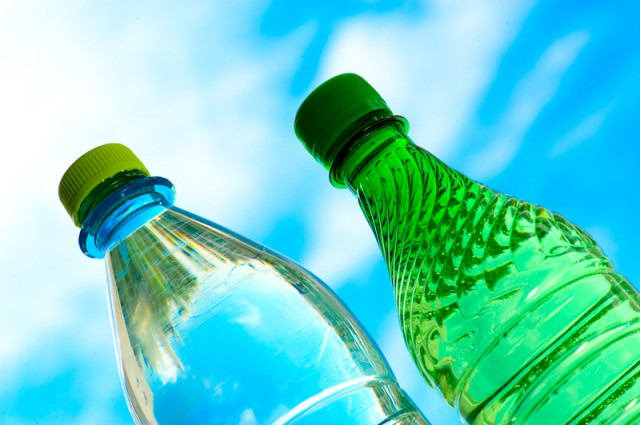Portable H20 dilemma: the bottled water issue
June 19, 2013
 So you’re dripping in summer sweat, your mouth feels like you’ve been sucking on sand and you left your water canister at home with no water fountain in sight. This is when I usually opt for apple juice but my official Ecoholic Poll question was: if there were a gun to your head in the above scenario, which bottled water would you choose? I got a ton of responses, including: “Fiji, mainly because it’s not a coke, pepsi or nestle subsidiary;” “Nestle brands (Pure Life or perrier) because the water is from locally sourced groundwater”; “Something 69¢ or less.”
So you’re dripping in summer sweat, your mouth feels like you’ve been sucking on sand and you left your water canister at home with no water fountain in sight. This is when I usually opt for apple juice but my official Ecoholic Poll question was: if there were a gun to your head in the above scenario, which bottled water would you choose? I got a ton of responses, including: “Fiji, mainly because it’s not a coke, pepsi or nestle subsidiary;” “Nestle brands (Pure Life or perrier) because the water is from locally sourced groundwater”; “Something 69¢ or less.”
Truth when you’re up shit’s creek without a drop to drink, it’s hard to know which bottled water is the least bad. Is there one? In the end, I reviewed four bottled options (plus a canister) in the latest Ecoholic column, and since we ran out of space for more, thought I’d add a couple backgrounder reviews online. Like the ones in the column, they all get failing grades, but some fail a little less than others. Ultimately, we did this product guide because I was writing a news story on Nestle’s refusal to accept mandatory drought conditions at its Ontario-bottled water source so we figured people should know the politics behind other bottles too…
VOLVIC/EVIAN: Shipping in water from France or anywhere in Europe is never really justifiable. Sorry Volvic, having a 100% recyclable bottle doesn’t make you special. Where’s your recycled content? Some tough-to-find glass bottled options are reusable. Too bad Evian only shaved plastic usage off 1.5 litre bottles. Owned by French multinational Danone 1/5
VOSS: Bonus point for nice reusable glass bottle (though heavy glass adds to its carbon footprint so make sure to reuse this – even if the company says it’s “carbon neutral”) just a shame it, and seemingly every glass bottled water on the market, comes from Europe, in this case Norwegian wells. Talks up Voss Foundation’s clean water work in Africa but no fixed amount from each bottle goes to charity. 2/5
ETHOS: Overpriced Starbucks water bottled in Pennsylvia. Five to 10 cents per bottle goes to the Ethos Water Fund is better than nothing so we’re giving it an extra point for that. So far, over $7.38 million to water, sanitation and hygiene education programs in water-stressed countries. Call to consumer line reveals exact source/location of “controlled wells and protected springs” is proprietary. No recycled content in bottles. Honestly, if you’re standing in a Starbucks, ask for actual tap water in washable mug and donate money to charity instead. 2/5
– Canadians bought 2.3 billion litres on bottled water in 2012, up 2% from previous year($2.3 billion)
-Over 30% of water bottles ended up in landfill last year in Canada
-17 million barrels of oil go into making PET plastic waster bottles in North America, enough to fuel 1.3 million cars for a year
-Producing bottled water filtered from municipal taps requires 2000 times the energy then tap water itself
WHISTLER WATER: Local pick for west coasters – glacial water from north of, well, Whistler. These guys use conventional PET plastic with an additive that’s supposed to make it biodegradable – but under what conditions? It certainly won’t biodegrade by the side of the road or in airless landfill, so who cares? No bonus points here, unless you’re on the west coast (then add a point). 1/5 unless you live in BC then 2/5
ESKA: Quebec glacial water. It’s a shame their plastic bottles don’t have recycled content (Naya’s are 100% recycled content), but if you’re looking for Canadian water that doesn’t come in plastic, these guys offer a glass option. Heavier glass bottles have a higher carbon footprint but can be more easily reused, though this has a junkier cap then Voss or Volvic glass. 2/5
Also in the latest Ecoholic: Botl Filters for your canister, the Water Brother’s Quench App for tracking water refills near you and more! Read on…
